Read next
The latest news, updates and expert views for ambitious, high-achieving and purpose-driven homeowners and property entrepreneurs.

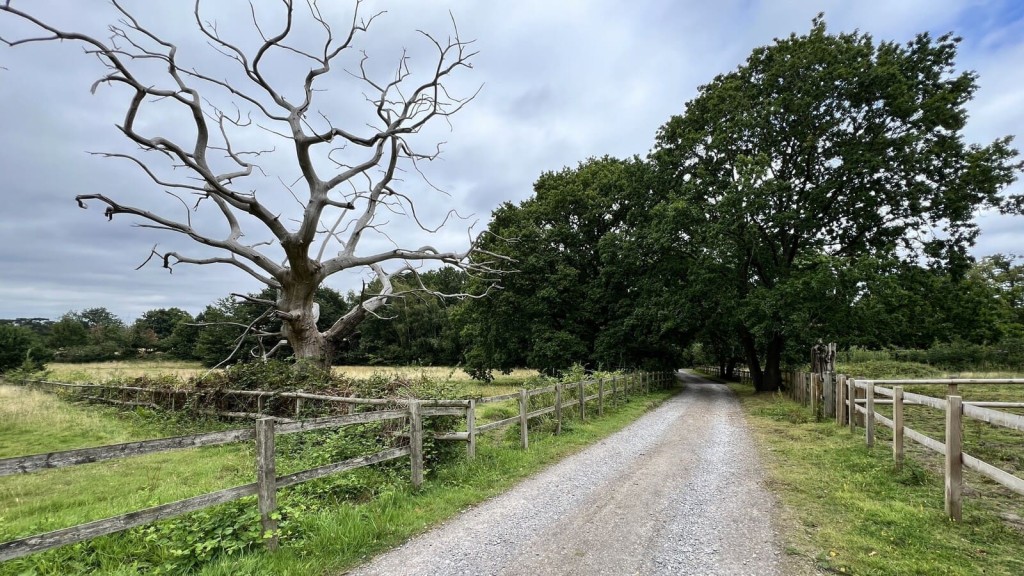
The London's Green Belt has long been seen as untouchable - a seemingly permanent green buffer protecting London from unchecked urban sprawl.
But with housing need outpacing supply and affordability in freefall, that orthodoxy is finally shifting.
In a major policy pivot, Mayor Sadiq Khan has declared that the long-term, unwavering protection of the Green Belt is officially outdated - opening the door to significant reform of how London plans and uses this land.
For the first time, planning permission to build on London’s Green Belt is being actively considered - not for all Green Belt land, but for underused, poor-quality sites near existing public transport.
This marks a turning point in London’s planning history.
As this article explores, building homes in the London's Green Belt is no longer a fringe idea, but a critical strategy in solving the city’s housing crisis.
But will it work?
Join me as I run through exactly what Mayor Khan’s groundbreaking Green Belt proposals mean - and reveal where the next wave of housing opportunities is set to emerge.
If you’re a developer, landowner, policymaker, or simply a Londoner wondering what’s coming next, this is the place to start.
London’s Green Belt, stitched into the post-war Town and Country Planning Act, forms a physical corset of 513,860 hectares encircling the capital and its surrounding shires - an area twice the size of Luxembourg.
Almost 80 years on from its formal introduction, this Green Belt corset still constrains the city: it pushes most new development 35 miles out, ties land values to scarcity, and, critics argue, drives median London rents to record highs.
Yet the romantic picture painted on British postcards - rolling green meadows, accessible and perched just at the city’s edge - is indeed largely a myth.
Here’s the reality check - fewer than one in three acres of the London's Green Belt is open to ordinary Londoners, with City Hall’s own audit putting fully accessible parkland at just 13% - the rest is private farmland, scrub, golf courses, quarries, distribution depots, landfill sites, and institutional land like hospitals and prisons.
In Mayor Khan's own word, blanket protections that freeze all 500+ thousand hectares are now “wrong, out-of-date, and simply unsustainable”.
Furthering this point, Khan also stated that he wants to “forge a new consensus on planning that’s fit for 21st century London, where we build the affordable housing we need – including on parts of the Green Belt.”
These announcements mark a monumental shift. For the first time, a London mayor is signalling a willingness to relax Green Belt rules in a bid to solve the housing crisis.
While Mayor Khan notes this relaxation will only be for “poor-quality, badly maintained, inaccessible” plots lying near existing rail or Tube corridors, it is still the biggest attitude shift we’ve seen in London in relation to the Green Belt since the policy was first introduced almost eight decades ago.
This pledge aligns with the December 2024 introduction of a formal Grey Belt in national policy - a new designation designed to channel growth toward land that least fulfils the Green Belt’s core purposes.
So, has the corset finally been unlaced? Not quite yet. The consultation window is open until 22 June 2025, and the draft London Plan - to be published in 2026 - will decide to what extent the stitches are loosened.
But the narrative has certainly flipped: instead of asking whether London’s Green Belt should stretch, City Hall is asking where it can give without unravelling.
The next sections test that proposition from every angle, from viability maths, ecology to design quality, and spell out what it means for households starved of affordable homes, for developers eyeing opportunity land, and for the thousands of private landowners holding the keys to London’s Grey Belt future.
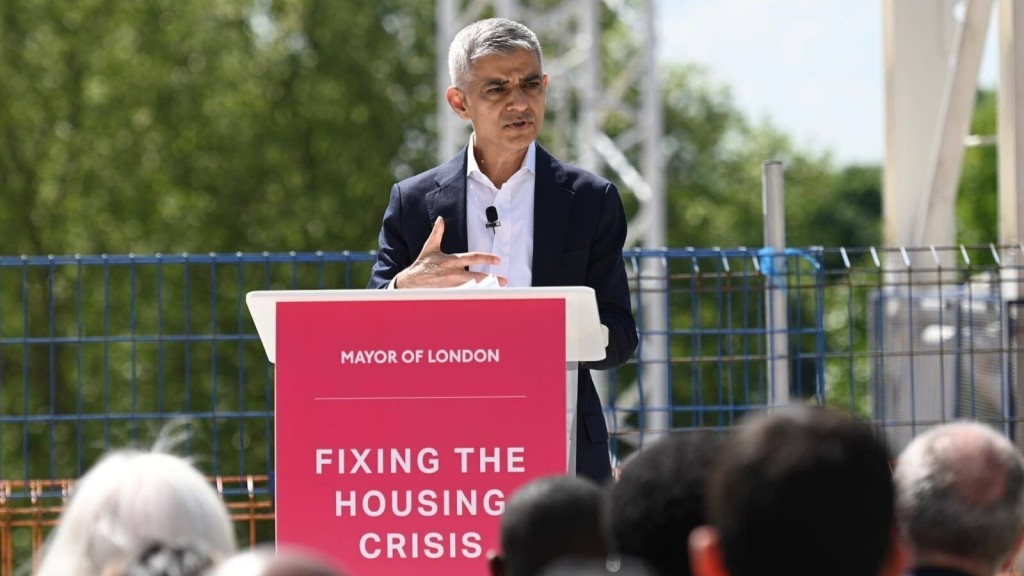
As we just mentioned, in a speech delivered in Greenwich in early May, the Mayor announced that City Hall will “actively explore” releasing parts of London’s Green Belt for new housing, explaining it was time the current policy was adapted to a 2025 context.
That statement might sound sweeping but the real impact lies in how, where, and to what extent these protections could be rolled back.
Will it mean small, targeted interventions on marginal plots, or a broader redrawing of the planning map? And how will this sit with local authorities, residents, and landowners?
Let’s take a closer look.
Crucially, Mayor Khan isn’t proposing to dismantle the London's Green Belt or replace its half a million hectares with high-rise towers.
Instead, a targeted framework is emerging to guide which parcels of land might be released for development, and under what conditions.
For any Green Belt site to be considered, it must meet several strict criteria:
Here’s the blunt truth: London isn’t delivering enough homes. In fact, the city faces a one-million-home shortfall over the next decade if it doesn’t boost its output dramatically.
While Mayor Khan insists that brownfield development will continue to be “maxed out,” he concedes that brownfield land alone won’t close that gap. More on brownfield land shortly.
What’s different now is political alignment and infrastructure funding. For the first time, a Labour government has signalled it will bankroll the “metroisation” of London’s rail network, including long-stalled extensions to the Bakerloo line and DLR. That investment could unlock previously unusable, transit-adjacent Grey Belt sites for higher-density, affordable neighbourhoods.
These proposals are central to the draft London Plan. The outcome will shape the rules that govern planning permission on London’s Green Belt for the next 20 to 25 years and if you want to have your say, the time is now.
Though it remained largely untouched since its introduction in 1955, in December 2024, the Labour government introduced sweeping changes to Green Belt policy in the updated NPPF - reforms that have already begun to make way for the urgent housing the country desperately needs.
In our view, this shift is long overdue, but nonetheless welcome, and represents a critical step in tackling the housing crisis.
To illustrate just how severe the crisis has become - and how wide the shortfall truly is - it's worth pausing to look at the numbers.
City Hall’s new consultation says London must find room for about 880,000 additional homes in just ten years – quick maths, that’s 88,000 a year over the next decade.
Yet net completions are drifting in the opposite direction.
The three-year average from 2020/21 to 2022/23 stands at merely 37,768 homes annually, as reported by Trust for London.
More concerning still, the latest out-turn for 2023/24 shows only 32,160 homes completed, the weakest performance in half a decade according to the Planning and Regeneration Committee’s report published in March 2025.
This leaves a structural gap of approximately 50,000 dwellings every single year. At current delivery rates, it would take 27 years to supply what London desperately needs in the next decade.
As you can see, the numbers here are unforgiving and the implications profound.
Without dramatic intervention, generations of Londoners face an increasingly unaffordable market, pushing essential workers further from the city centre, and threatening the capital's economic vitality.
The consultation may highlight the scale of the challenge, but the figures suggest City Hall has yet to grasp the nettle of implementation.
London’s 48 designated Opportunity Areas - zones identified for major new housing, jobs, and infrastructure - sit atop the capital’s largest remaining brownfield reserves.
But even at full capacity, they fall short.
According to the 2017 Strategic Housing Land Availability Assessment, these sites could deliver a maximum of just 460,000 homes by 2041 - barely half the homes needed in the next ten years alone.
Planning approvals are softening too: tall-building applications have fallen from 75 to 47 annually since 2020, and overall permissions lag completions by more than 300,000 unbuilt units.
This means that even if every viable brownfield plot were built out at lightning speed, London would still be hundreds of thousands of homes short.
It will come as a surprise to no one that in 2025, salaries are stagnating while rents are soaring.
Let’s quickly review the official figures.
According to the Office for National Statistics, private rents in London jumped 6.9% in the year to January 2024, followed by another UK-wide spike of 7.7% by March 2025.
Meanwhile, the affordability crisis has reached alarming levels. A typical one-bedroom flat now consumes 46% of median pre-tax pay across the capital. In Westminster, that figure climbs to a staggering 75%, according to Trust for London.
While this is going on, the temporary accommodation crisis continues unabated. Around 61,000 London households - roughly 183,000 people, including 90,000 children - spent last year in temporary housing, collectively costing London boroughs £4 million daily.
To make matters worse, homeownership remains firmly out of reach. In 2024, just 3% of homes sold in London were priced below five times local earnings. For many young people, the capital has shifted from a ladder of opportunity to a treadmill of survival. London's housing paralysis is no longer just a social issue but a growing economic liability for the nation.
These figures paint a bleak picture: a city increasingly split between those who secured housing before prices spiralled, and those now locked out of both renting and buying. The consequences stretch beyond personal hardship, threatening London’s diversity, cultural energy, and economic competitiveness.
Without decisive intervention, the capital risks becoming a city for the wealthy and the subsidised, with the middle hollowed out, and essential workers forced into ever-longer, more punishing commutes.
Put simply, without new land being opened up to build on, we don’t stand a chance of overcoming this housing crisis.
Unlocking poor-quality, inaccessible ‘Grey Belt’ strips near existing rail corridors can deliver the following three strategic benefits for London's housing crisis:
Far from concreting over the countryside, the approach of carefully unlocking Grey Belt land targets only low-quality land without ecological value, focusing density where infrastructure can support it; a pragmatic response to capital's deepening affordability crisis.
For households, the shift towards Green Belt development represents hope in a seemingly hopeless market.
The current trajectory offers no relief - only ever-increasing rents, longer commutes and diminished quality of life. Selective Green Belt release offers a path toward housing that ordinary Londoners can actually afford, in locations where they can maintain connections to employment and community.
For developers, these proposals create opportunities to build genuinely sustainable communities rather than piecemeal infill development. The combination of lower land costs and transport accessibility enables schemes with both commercial viability and true social value, a welcome departure from the often adversarial planning debates that characterise the status quo.
For landowners, the framework provides clarity amid uncertainty. Rather than speculative land banking, the strict conditions create transparent parameters for responsible development. By linking Green Belt release to affordability and design quality, the policy encourages long-term stewardship rather than short-term profit extraction.
I believe what makes this approach compelling is its pragmatism. It acknowledges that preserving every hectare of designated Green Belt, regardless of quality or accessibility, has become an ideological position rather than an evidence-based one. The reality is that some sections contribute little to the Green Belt's core purposes while their development could substantially address London's housing emergency.
The Mayor's nuanced approach recognises that London's survival as a dynamic, inclusive city requires making difficult choices. In balancing preservation with growth, environmental protection with social justice, it offers a blueprint for sustainable development that meets human needs without sacrificing core environmental principles.
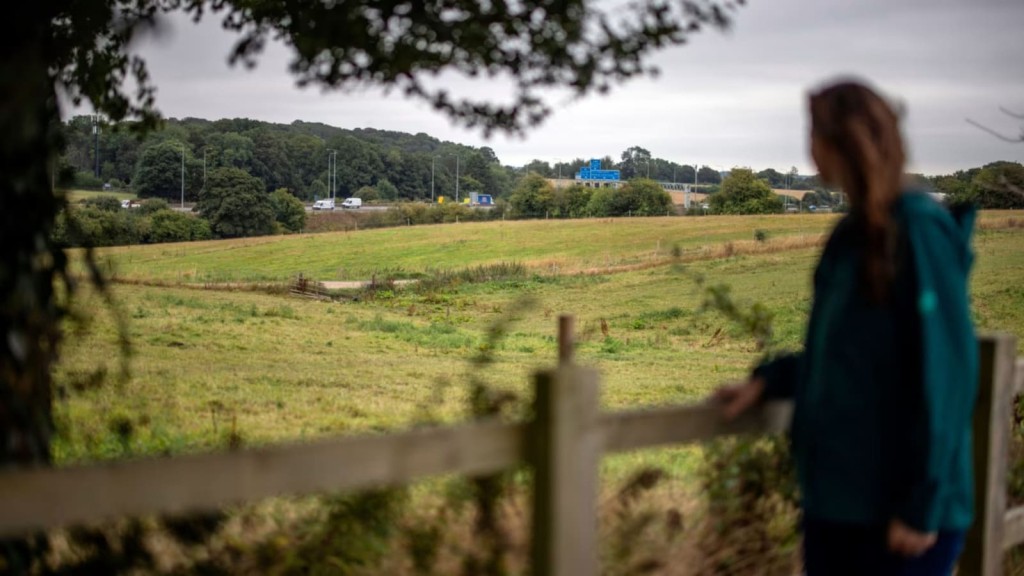
London’s Grey Belt isn’t a neat ring but a scatter-map of under-used fringe sites that already hug existing or funded rail corridors.
To be totally clear, Grey Belt refers to previously developed or underused land within the Green Belt that makes only a limited contribution to its main purposes – such as preventing urban sprawl, stopping neighbouring towns from merging, or safeguarding the countryside from encroachment.
In its recent call for sites, City Hall identified four outer-borough arteries where London’s Green Belt is both poorly maintained and transport-ready, making them prime candidates for new neighbourhoods under the Mayor’s relaxing Green Belt agenda.
Here’s a closer review of each.
First is the Upper Lea Valley glasshouse fringe, straddling Enfield and Waltham Forest along the Lee Valley line at Meridian Water. Here, disused nurseries, scrub, and fenced reservoirs sit on the urban perimeter of Edmonton.
Detailed mapping shows space for 18,000–22,000 homes across subsequent Meridian Water phases and the Tottenham Hale hinterland.
Crucially, the land is already flood-mitigated and masterplanned, with new green corridors feeding directly into Lee Valley Regional Park - ticking both biodiversity and public access boxes.
East of the valley lies the Hainault–Fairlop Central-line arc in Redbridge, where golf fairways, pony paddocks, and council depot land offer room for about 6,000–8,000 homes.
A borough-commissioned Green Belt review found these parcels add little strategic separation and sit within a clearly defined rail embankment boundary.
This means releasing land here would honour the Green Belt’s original purpose - that is, to prevent urban sprawl by maintaining open land between built-up areas and preserving the character of towns by keeping them physically separate.
The West London Orbital growth spine stitches together Brent, Barnet, Ealing, and Hounslow along a reopened freight line from Kew Bridge to Hendon.
Sidings, warehousing yards, and fragmented scrub could yield up to 27,000 homes, financing the line itself.
TfL’s business case explicitly links housing density on these plots to project viability, and boroughs have already committed to design codes with a 45% affordable requirement.
Finally, the Cray Valley rail corridor in Bromley and Bexley follows the Southeastern main line from St Mary Cray to Sidcup.
Here, low-yield arable strips could accommodate roughly 7,000 homes, all within a ten-minute walk of stations and local retail hubs.
Early promoters are already modelling over 20% biodiversity net gain, showing how ecological uplift can go hand in hand with new housing.
Early mapping estimates that Greater London’s Grey Belt sites could support around 300,000 homes - the equivalent of eight years at the Mayor’s new annual build target - without encroaching on high-value habitat or protected vistas.
Transport certainty is the linchpin: each of the four arcs sits in the TfL or Network Rail pipeline - DLR to Thamesmead, West London Orbital funding bids, Central-line capacity upgrades - de-risking Section 106 negotiations and underwriting higher densities.
Grey Belt plots also trade at 30–50% below inner-zone brownfield land values, making it financially viable to hit 40% affordability while still delivering high-quality design and ecological uplift.
As we’ve delved into, politically, Mayor Khan’s plans dovetail with the introduction of the Grey Belt in the updated NPPF (2024), boosting the odds of plan-examiner support.
Nearly half of London’s Green Belt overlaps Sites of Importance for Nature Conservation, which remain off-limits, so parcel-by-parcel ecological filters must be rigorously applied.
Community resistance in outer-boroughs is also a risk - expect height caps and design-panel vetting to calm sprawl fears.
Finally, City Hall is mooting time-limited permissions, meaning stalled sites could revert to full Green Belt if build-out lags.
For households, the takeaway is clear: these four corridors offer the chance to create new, rail-served neighbourhoods without erasing cherished commons. For forward-thinking developers and landowners, they represent the front line of London’s next planning battlefield and the best-prepared teams will secure a definite first-mover advantage.

Mayor Khan’s Green Belt plans still demand a full planning application process to build in the Green Belt but the rules are changing fast.
Below is a step-by-step guide for landowners and developers looking to bring underutilised Green Belt land in London into use, without falling foul of City Hall or the rules outlined in the new NPPF 2024.
The December 2024 NPPF amendment created a new hierarchy: local plans must release London’s Grey Belt before touching the higher-value Green Belt.
According to the NPPF, Grey Belt is defined as “land in the Green Belt comprising previously developed land and/or any other land that, in either case, does not strongly contribute to any of purposes (a), (b), or (d) in paragraph 143.” Those purposes include preventing urban sprawl, stopping neighbouring towns from merging, or safeguarding the countryside from encroachment.
The definition then continues to “exclude land where the application of the policies relating to the areas or assets in footnote 7 (other than Green Belt) would provide a strong reason for refusing or restricting development.” Those assets outlined in footnote 7 include other protected areas like Areas of Outstanding Natural Beauty or Sites of Special Scientific Interest.
Development proposals on these lands are not considered "inappropriate" if they meet all four tests set out in paragraph 155 of the NPPF: there must be a clear need for the development, the site must be in a sustainable location, any harm to the Green Belt must be minimal, and the proposal must follow the established Golden Rules.
This means that Grey Belt designation can open up new opportunities for development, but not all sites qualify.
With so many variables at play, a proper assessment is the first step toward successful development. You can assess your site’s Grey Belt potential with our free Grey Belt Assessment Tool, which guides you step-by-step to see if your land meets the criteria for Grey Belt status and has development potential.
It takes less than five minutes and once you’re done, you’ll have an indication of whether your site is likely, potentially, or unlikely to qualify as Grey Belt.
The ‘Towards a new London Plan’ consultation - open until 22 June 2025 - outlines five non-negotiable tests that must be met for any development on Grey Belt land. These criteria are designed to ensure that Green Belt reform doesn’t become a backdoor to sprawl or low-quality development, but instead delivers on London’s long-term priorities: affordability, sustainability, and design excellence.
To proceed, schemes must demonstrate:
These five tests are deliberately stringent. They reflect a clear shift away from volume-at-any-cost planning and toward a more strategic, values-led approach. If followed rigorously, they could become a model for future growth corridors, not just in London, but in cities across the UK facing similar housing and land constraints.
A robust pre-application submission is critical - not just as a formality, but as your first chance to shape how borough officers, GLA planners, and key stakeholders perceive your scheme.
In the context of Green Belt reform, where scrutiny will be intense and expectations high, pre-apps offer an opportunity to front-load design quality, policy alignment, and local legitimacy.
This stage is your proving ground. The most successful schemes will be those that treat the pre-application not as a box-ticking exercise, but as a strategic design and engagement process, one that resolves risks early and lays out a clear, policy-compliant roadmap for delivery.
Here's what you need to include.
A robust masterplan is your project’s strategic blueprint, setting out land uses, phasing, infrastructure and neighbourhood character. By collaborating with experienced residential architects, you ensure that your development’s proposed density, building typologies, and open-space layouts work in harmony with both the existing context and the Mayor’s design code requirements.
A clear masterplan also underpins viability, accelerates technical approvals, and gives local communities - and planning officers - a coherent vision they can back.
Engage specialist Green Belt architects and planning consultants from the outset to craft a robust design and access statement that goes beyond rhetoric.
These experts will embed your scheme in the policy narrative, showing how unlocking poor-quality Grey Belt land directly tackles London’s housing shortfall while leveraging lower land values to fund deeper affordability.
Their technical input on Green Belt function, national policy tests, and viability will strengthen your case at examination and will pre-empt any objections.
A thorough transport assessment goes beyond counting car parking spaces. Instead, it models modal-shift scenarios that underpin a low-carbon future.
By collaborating with transport planners who understand TfL’s funding envelopes, you can show how funded extensions (DLR to Thamesmead, West London Orbital, Bakerloo Extension) will drive up public transport uptake and reduce private car dependency.
Detailed analysis of peak-hour capacities, pedestrian catchments, and cycle-network linkages reassures borough highways teams that your scheme will not only sit beside new infrastructure but actively bolster its business case.
Delivering a 20% biodiversity net gain demands a scientific, ecologist-led strategy.
For this reason, we recommend commissioning a CIEEM-registered ecologist to map every habitat parcel, veteran tree, and protected species site, then develop enhancement measures - from wildflower meadows and bat roost features to rain-gardens and native hedgerows - that exceed the DEFRA 4.0 metric.
A clear, phased management plan with stewardship responsibilities and monitoring triggers demonstrates to planners that your scheme will leave nature measurably richer than before.
Your viability appraisal should be a model of transparency: layer gross development values, deduct realistic build and infrastructure costs, and show how the inherent land-value discount on Grey Belt plots funds at least 40% genuinely affordable housing without eroding developer returns.
By embedding a GLA ‘affordable housing review mechanism’, you prove that any unexpected uplift in sales values will flow back into additional social or affordable units, giving both the GLA and local authorities the confidence that public benefit is hardwired into your cashflow.
Early, meaningful engagement with the community that will be impacted by your development transforms potential resistance into constructive collaboration.
How do you go about doing this?
A few ideas include hosting workshops with local residents and ward councillors to address play space, ecology, and design quality concerns, then capture feedback in a concise engagement report. Liaise with TfL and Network Rail on station area improvements, and brief environmental NGOs on your biodiversity strategy.
Summarising this dialogue shows planning committees that you’re not parachuting in a developer-led scheme, but co-creating a community-driven blueprint for sustainable, transit-anchored neighbourhoods.
Under the draft London Plan, any major planning application on Green Belt land — regardless of scale — must be referred to the Mayor of London. This means that even a relatively modest (but technically 'major') 10-home proposal on a Grey Belt site will automatically trigger the referral process.
Once referred, your scheme enters the Mayor’s two-stage process: first at the pre-determination phase (Stage 1), and again after the local authority has issued its decision (Stage 2).
Understanding this process early is crucial. It helps you avoid unexpected policy interventions or delays — and ensures your proposal aligns with the Mayor’s strategic priorities.
After the committee issues its recommendation, the application returns to City Hall.
The Mayor can:
How does the size of a scheme impact its outcome?
Bottom line: Mapping your referral strategy from the outset - whether it's driven by the Green Belt location or the number of units - helps set realistic timelines and resource allocations. This proactive approach will also enable you to anticipate and address potential policy hurdles early, keeping the momentum towards securing successful planning consent.
The draft London Plan gives boroughs and the GLA new powers to make sure every Grey Belt consent delivers on design, timing, and substance.
Before full approval, developers must agree on a bespoke design code that fixes street layouts, building types, materials, and public-realm treatments to the Mayor’s quality standard.
Planning permissions will carry delivery bonds and a strict three-year ‘start on site’ deadline. Fail to begin work in time and the consent can be revoked, with the land reverting to full Green Belt protection.
Smaller Grey Belt schemes will follow a standard set of Section 106 milestones, while larger, strategic projects may negotiate custom Infrastructure Funding Statements and phased delivery timetables.
These measures guard against long-term land banking by ensuring that permissions translate quickly into homes and genuine community benefits, not speculative land-value plays.
Once planning permission is secured, developers must meet a suite of post-consent obligations designed to lock in the public benefits.
First, they pay the appropriate Community Infrastructure Levy - both the London-wide charge and any additional borough rates - and finalise Section 106 agreements that tie contributions to transport upgrades and affordable-housing milestones.
They must also deliver on the Mayor’s skills agenda by ensuring at least 5% of the on-site workforce are apprentices trained through the London Construction Academy.
Finally, to guarantee that the promised 20% biodiversity net gain is achieved and maintained, they are required to submit detailed habitat-condition monitoring reports every year for the next ten years.
While achieving planning permission to build on London’s Green Belt is no longer a fantasy, success will hinge on speaking the Mayor’s language: transit-linked density, deep affordability, and ecological uplift.
For well-prepared promoters and property developers, London’s Green Belt is shifting from a no-go zone to a once-in-a-generation opportunity; for the unprepared, it remains an immovable wall.
The economics of development here reveal compelling upsides.
According to Lichfields, in 41% of London's Metropolitan Green Belt, residential values already exceed £4,000 per square metre, creating significant potential uplift when land transitions from protected to developable status. Agricultural land typically valued between £20,000 and £50,000 per hectare can jump fifty-fold to £2-3 million with residential planning permission, according to UK Parliament Housing Committee data.
This value differential creates room for substantial affordable housing provision beyond what's possible on brownfield sites, where baseline land values start much higher. The land value reset effect gives Grey Belt schemes a distinct viability advantage - precisely why the Mayor's insistence on 50% affordable housing is commercially realistic here but remains challenging elsewhere.
For landowners, the message is clear: collaborative partnerships with developers who understand the new planning framework will maximise returns. Early-stage design investment, biodiversity gain commitments of 20% or higher, and transparent engagement with transport authorities signal serious intent to planning committees. The residual land values still deliver transformative returns even with heightened infrastructure and affordability requirements.
Strategically, the greatest opportunities lie within 800 metres of existing or funded rail stations where per-square-metre values already support medium-density housing. Developers who map their sites against the planned Bakerloo Line extension, DLR expansion, and West London Orbital stand to benefit most from the policy shift as these transport investments unlock new growth corridors precisely where Grey Belt land is primed for reappraisal.

For decades, London’s Green Belt has been cast as a zero-sum dilemma: either you build homes and sacrifice nature, or you protect the countryside and condemn families to sky-high rents.
Mayor Khan’s relaxing Green Belt policy shatters that false choice by embedding three non-negotiable outcomes into every Grey Belt consent: deeper affordability, exceptional design, and a measurable uplift for wildlife.
In practice, this triple-win is already taking shape across the capital.
Grey Belt parcels typically trade at a substantial discount to inner-London brownfield sites. Indeed, outer-London residential land values remain about 30% below their 2020 peak, a saving City Hall plans to redirect into social value rather than developer profit. Because residual land costs are lower, schemes can meet the Mayor’s 40% genuinely-affordable target without eroding viability.
Moreover, early data modelling studies suggest that releasing just 3% of the Green Belt could deliver hundreds of thousands of new homes, while shaving £25–£45 per square foot off plot prices compared to inner-zone brownfield sites, in return, savings that flow directly into cheaper rents or greener construction specifications.
Several pioneering developments demonstrate that London’s Green Belt for housing can marry affordability, design excellence, and biodiversity enhancement:
These examples prove that planning permission to build on London’s Green Belt can be contingent on rigorous social and environmental deliverables and still secure private investment.
A key innovation of the draft London Plan is the requirement for every Grey Belt scheme to adopt a borough-endorsed design code that:
The lessons from Darwin Green and Brent Cross are clear: codify design principles at the outset to avoid costly, value-draining revisions later.
For the public, every 1% uplift from 25% to 40% affordable housing cuts median new-build rents by roughly £90 pcm in Zones 4–6, making homes genuinely within reach of ordinary families.
For developers, achieving 20% biodiversity net gain yields a 15-year marketing premium for dwellings overlooking green corridors, according to Savills surveys.
For landowners, Grey Belt re-designation can multiply option values by at least 4–6 times, while still enhancing ecological assets above their baseline condition.
Under the Mayor of London’s Green Belt plans, addressing the housing shortage need not be a devil’s bargain. By focusing on lower-cost Grey Belt land, enforcing strict affordability quotas, applying robust design codes, and adopting a biodiversity-first approach, the capital can build its way out of the housing crisis at the same time.
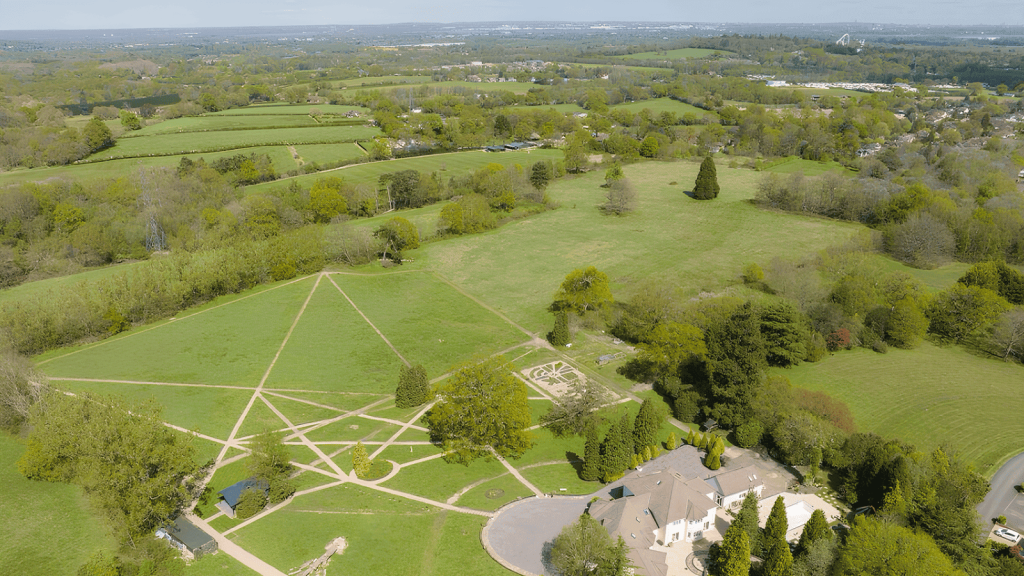
Left untouched, the Green Belt corset will continue to squeeze London's supply of genuinely affordable homes and push more families into temporary accommodation or out of the city altogether.
Selectively loosening the Green Belt - focusing only on poorly maintained, inaccessible parcels already served by transport - can deliver hundreds of thousands of well-designed, biodiversity-positive homes without sacrificing the Belt’s core purpose.
For Londoners, that means lower rents, genuine public green spaces and new, climate-literate communities.
For property developers and landowners, it offers a clear, demanding but achievable route to planning permission to build on London’s Green Belt.
The consultation clock is ticking: the choice is ours to seize this Grey Belt opportunity or tighten the corset another notch and risk the capital’s vitality slipping away.
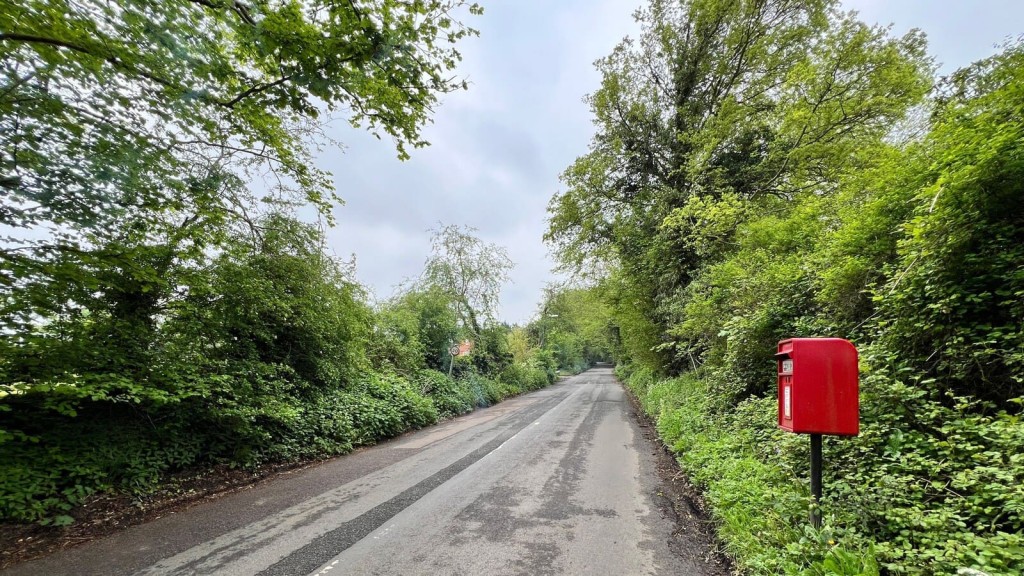
Although over the past decade London has continued to densify, not just in its centre, but impressively across its suburbs, the results are still not sufficient to meet even half of the capital's annual housing need, leaving a structural deficit that compounds with each passing year and drives both rents and house prices to increasingly unaffordable levels for ordinary working Londoners.
Meanwhile, cities like Birmingham, Leeds, and Sheffield remain surprisingly low-density beyond five kilometres from their cores.
These cities have made very little progress in increasing density and are hemmed in by their own Green Belts, creating similar affordability crises while contributing to Britain's nationwide housing shortage of nearly 4 million homes – a gap that widens each year as supply persistently lags behind objectively assessed housing need across all tenures.
Because housing density isn't just a statistic. It's the foundation of economic productivity, social mobility, and environmental resilience. But unless we allow our cities to grow outward and upward, we'll continue forcing low-density sprawl further afield, driving car dependency, and worsening inequality.

So there you have it - a comprehensive guide to delivering homes in London's Green Belt.
However, as you might have concluded from this article, when it comes to the Green Belt (and to the English planning system in general) things are rarely black and white. It's a deeply nuanced policy and is one we've spent over a decade working with.
The landscape is now evolving more rapidly than at any point in the past forty years, driven by the Labour government's planning reforms and Mayor Khan's groundbreaking decision to allow building on certain Green Belt sites in London for the first time.
These critical policy shifts are also the focus of our new book, 'Green Light to Green Belt Developments'.
We've written this book for anyone seeking a deeper insight into one of England's most debated urban planning issues, making it accessible to both industry professionals and the general public. Get your own copy on Amazon today.
What distinguishes our book and our RIBA chartered practice, is that we don't just analyse policy; we've implemented it successfully across countless projects.
As one of the UK's leading architecture and planning practices specialising in Green Belt applications, we've secured planning permission for numerous challenging sites that others deemed impossible.
If you're a landowner or developer with Green Belt land, contact us today to explore your site's development potential.

Nicole I. Guler BA(Hons), MSc, MRTPI is a chartered town planner and director who leads our planning team. She specialises in complex projects — from listed buildings to urban sites and Green Belt plots — and has a strong track record of success at planning appeals.
We look forward to learning how we can help you. Simply fill in the form below and someone on our team will respond to you at the earliest opportunity.
The latest news, updates and expert views for ambitious, high-achieving and purpose-driven homeowners and property entrepreneurs.
The latest news, updates and expert views for ambitious, high-achieving and purpose-driven homeowners and property entrepreneurs.
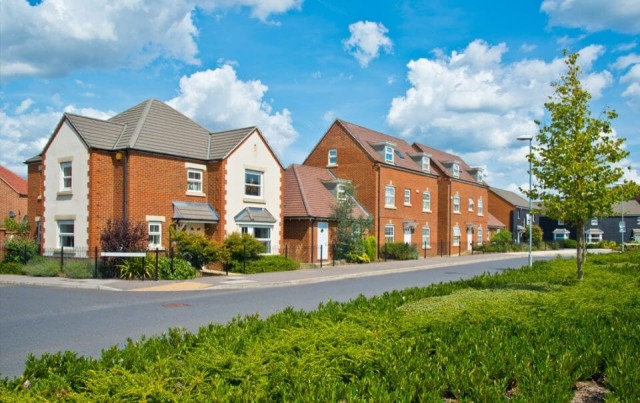

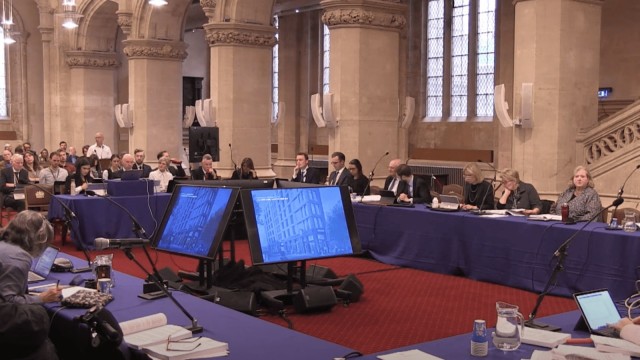
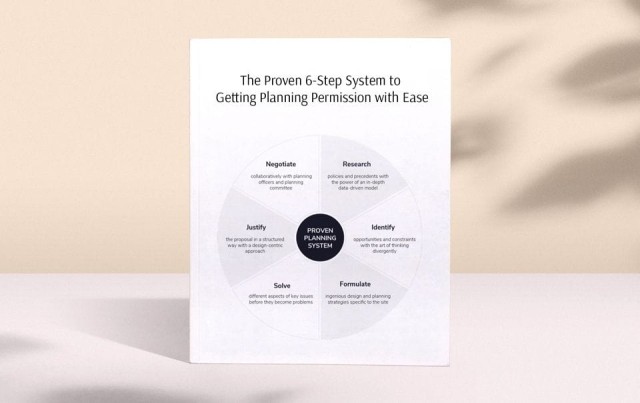
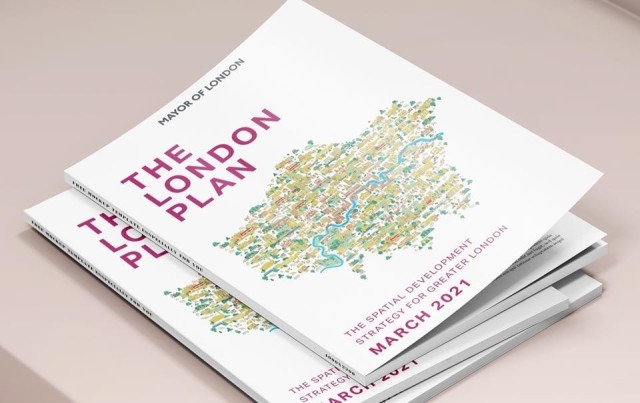
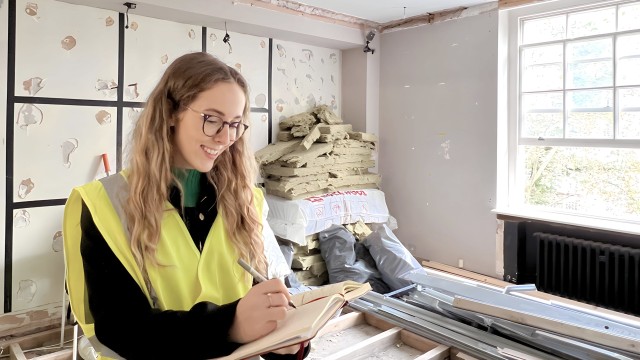
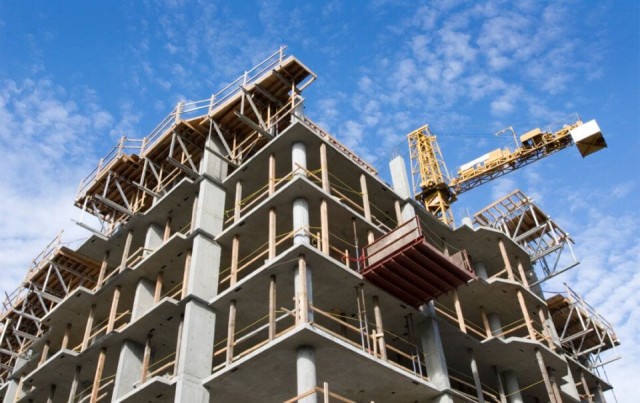
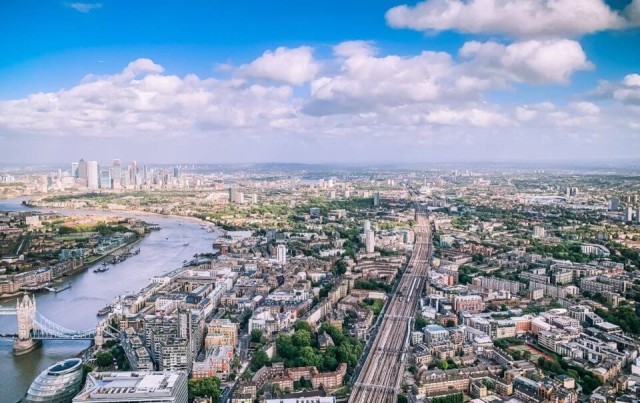

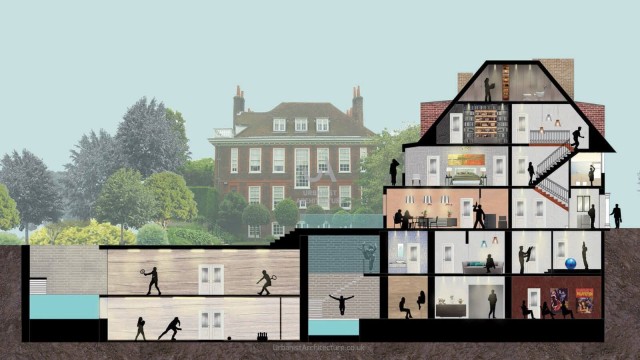
We specialise in crafting creative design and planning strategies to unlock the hidden potential of developments, secure planning permission and deliver imaginative projects on tricky sites
Write us a message